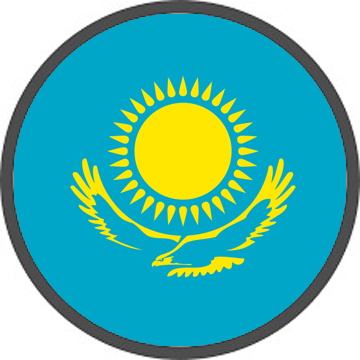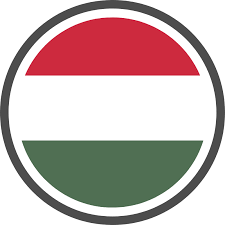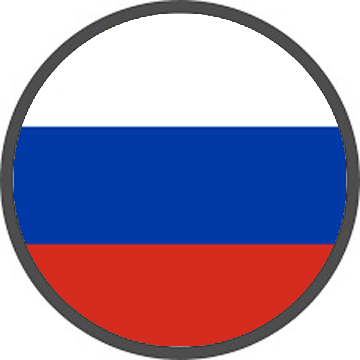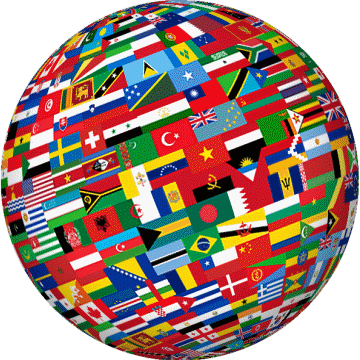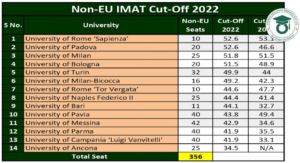Over 7.5 lakh Indian students studying abroad in 240 countries: official data
Over 7.5 lakh Indian students studying abroad in 240 countries
The number of Indian students studying abroad has been on a steady rise in recent years, as students look to broaden their horizons and gain international experience. As per available data, there are currently over 7.5 lakh Indian students studying abroad in over 240 countries, with UK, US, Australia, and Canada remain the top choices, there is growing interest in other destinations such as Uzbekistan, the Philippines, Russia, Ireland, Kyrgyzstan, and Kazakhstan. In the US, the number of Indian students enrolled increased by 20% to almost 200,000 in the 2021-2022 academic year, surpassing the number of Chinese international students.
The data indicates that the number of Indian students studying abroad has increased significantly following the pandemic. In 2022, around 750,000 Indian students pursued higher education overseas, which is a notable rise from 450,000 in 2017 and 260,000 in 2020. In 2022, India surpassed China as the leading source of international students in the US. The top choices for Indian students still include the UK, US, Australia, and Canada.
The USA has always been a popular destination for Indian students seeking higher education. According to the data available, there were 211,930 Indian students studying in the USA in 2022. The number of Indian students in the USA has seen a consistent increase over the years, with a surge of nearly 20% in the number of Indian students studying in the USA for the academic year 2021-2022 alone. This can be attributed to various factors, such as the quality of education, diverse course options, and the post-study work visa options available in the USA. The total number of enrolled students was 1,99,182.
Canada is another country that has seen a steady rise in the influx of Indian students. The number of Indian students in Canada was over 2.2 lakhs in 2019, constituting 34% of Canada’s foreign student population. Currently, there are more than 3 lakh Indian students studying in Canada. The country’s high standard of living, welcoming culture, and quality education options are some of the reasons why Indian students are choosing Canada as their study destination.
UK has also been a popular choice for Indian students seeking higher education. The announcement of the Graduate Route visa by the British government in 2019 has further increased the number of Indian students joining UK universities. In 2022, Britain granted 1.4 lakh sponsored study visas to Indians, a significant increase from 34,261 visas in 2019. The UK’s high-quality education system, diverse course options, and the opportunity to gain work experience after graduation are some of the reasons why Indian students are attracted to studying in the UK.
Australia is also a popular destination for Indian students seeking higher education. According to the data available, there were 92,383 Indian students studying in Australia in 2022. Australia’s welcoming culture, high standard of living, and quality education options are some of the reasons why Indian students are choosing Australia as their study destination. Moreover, the post-study work visa options available in Australia make it an attractive option for Indian students seeking to gain work experience after graduation.
Germany has also seen a significant increase in the number of Indian students studying in the country. In 2022, there were 20,810 Indian students studying in Germany. The country’s high-quality education system, diverse course options, and the opportunity to gain work experience after graduation are some of the reasons why Indian students are attracted to studying in Germany. Moreover, the tuition fees and living expenses in Germany are relatively lower compared to other popular study destinations, making it an attractive option for Indian students.
Among students pursuing medical studies, Ukraine and China have traditionally been popular destinations. However, the current crisis in Ukraine has raised concerns about the future of approximately 18,000 Indian medical students studying there. Meanwhile, due to the COVID-19 pandemic, about 23,000 medical students who were studying in China have been unable to return. China resumed issuing student visas in August last year, and approximately 6,200 Indian students were able to obtain them.
While some countries have seen a surge in the number of Indian students, others have remained a popular choice over the years. For instance, countries like France and Greece have continued to attract a significant number of Indian students. France has 10,000 Indian students pursuing higher education. France is aiming to attract 20,000 Indian students by 2025, while Greece plans to increase its outreach to Indian academic institutions through the “Study in Greece” platform.
Singapore, the United Arab Emirates, and Malaysia have also emerged as popular destinations for Indian students. The United Arab Emirates has the highest number of Indian students studying abroad, with a staggering 2.19 lakh students currently enrolled in various courses across the country. The country’s strategic location, coupled with its welcoming policies towards international students, has made it a preferred choice for many Indian students.
Apart from these popular destinations, Indian students are also exploring other study destinations such as Armenia, Austria, Azerbaijan, Belarus, Bulgaria, Cyprus, Estonia, Finland, France, Georgia, Hungary, Ireland, Italy, Japan, Kazakhstan, Latvia, Lithuania, Malta, Moldova, the Netherlands, New Zealand, Norway, Poland, Portugal, Romania, Russia, Slovakia, Slovenia, South Africa, Spain, Sweden, Switzerland, Taiwan, Tajikistan, Thailand, Turkey, Ukraine, Uzbekistan, and Venezuela.
The trend of Indian students opting to study abroad has been on the rise in recent years. While some countries have seen a surge in the number of Indian students, others have remained a popular choice over the years. The reasons for this trend vary from the high-quality education system and diverse cultural experiences to the welcoming immigration policies and robust job markets. As Indian students continue to explore options abroad, it is evident that the trend is here to stay.
In the table Below you can find the data of the Indian students studying abroad
| S.No. | Name of Country | No. of Students |
| 1 | Antigua & Barbuda | 40 |
| 2 | Armenia | 3000 |
| 3 | Australia | 92383 |
| 4 | Austria | 350 |
| 5 | Azerbaijan | 123 |
| 6 | Bangladesh | 5200 |
| 7 | Beirut | 2 |
| 8 | Belarus | 906 |
| 9 | Barbados | 86 |
| 10 | Belgrade | 4 |
| 11 | Belgium | 764 |
| 12 | Bhutan | 4 |
| 13 | Brazil | 4 |
| 14 | Brunei Darussalam | 9 |
| 15 | Bulgaria | 357 |
| 16 | Canada | 215720 |
| 17 | China | 23000 |
| 18 | Cuba (Dominican Republic) | 6 |
| 19 | Cyprus | 3007 |
| 20 | Czech Republic | 658 |
| 21 | Denmark | 369 |
| 22 | Egypt | 356 |
| 23 | Estonia | 257 |
| 24 | Finland | 1051 |
| 25 | France | 10000 |
| 26 | Georgia | 7500 |
| 27 | Germany | 20810 |
| 28 | Greece | 7 |
| 29 | Guyana | 184 |
| 30 | Hong Kong | 916 |
| 31 | Hungary | 419 |
| 32 | Iceland | 17 |
| 33 | Indonesia | 8 |
| 34 | Iran | 1700 |
| 35 | Ireland | 5000 |
| 36 | Israel | 550 |
| 37 | Italy | 4634 |
| 38 | Japan | 1694 |
| 39 | Jamaica | 125 |
| 40 | Jordan | 2 |
| 41 | Kazakhstan | 5300 |
| 42 | Kenya | 254 |
| 43 | Kuwait | 178 |
| 44 | Kyrgyzstan | 10000 |
| 45 | Latvia | 1850 |
| 46 | Lebanon | 5 |
| 47 | Lithuania | 800 |
| 48 | Luxembourg | 80 |
| 49 | Malaysia | 2000 |
| 50 | Malta | 434 |
| 51 | Mauritius | 807 |
| 52 | Mexico | 150 |
| 53 | Moldova | 262 |
| 54 | Mozambique | 2 |
| 55 | Nepal | 2200 |
| 56 | Netherlands | 1469 |
| 57 | New Zealand | 30000 |
| 58 | Norway | 480 |
| 59 | Oman | 43,600 |
| 60 | Pakistan | 230 |
| 61 | Panama (also Costa Rica, Nicaragua) | 109 |
| 62 | Philippines | 15000 |
| 63 | Poland | 4000 |
| 64 | Portugal | 415 |
| 65 | Qatar | 150 |
| 66 | Republic of Korea | 592 |
| 67 | Reunion Island | 3 |
| 68 | Romania | 700 |
| 69 | Russia Federation | 16500 |
| 70 | Saudi Arabia | 80800 |
| 71 | Serbia | 1 |
| 72 | Singapore | 1500 |
| 73 | Slovakia | 70 |
| 74 | Slovenia | 36 |
| 75 | South Africa | 434 |
| 76 | Spain | 1500 |
| 77 | Sri Lanka | 7 |
| 78 | St. Denis | 2 |
| 79 | St. Kitts & Nevis | 10 |
| 80 | St. Lucia | 211 |
| 81 | St. Vincent & Grenadines | 59 |
| 82 | Sudan | 10 |
| 83 | Sweden | 2000 |
| 84 | Switzerland | 1850 |
| 85 | Taiwan | 150 |
| 86 | Tajikistan | 1199 |
| 87 | Tanzania | 2 |
| 88 | Thailand | 297 |
| 89 | Trinidad & Tobago | 81 |
| 90 | Turkey | 48 |
| 91 | Ukraine | 18000 |
| 92 | United Arab Emirates | 219000 |
| 93 | United Kingdom | 55465 |
| 94 | USA | 211930 |
| 95 | Uzbekistan | 50 |
| 96 | Venezuela | 229 |
| 97 | Vietnam | 1 |
| 98 | Yemen | 6 |
| 99 | Zagreb | 9 |




